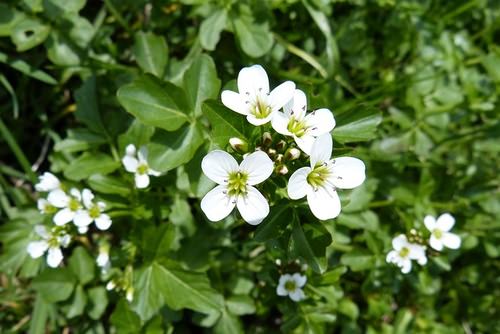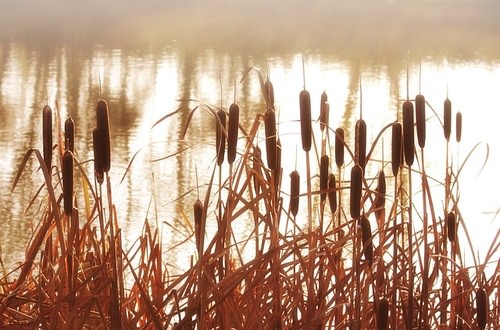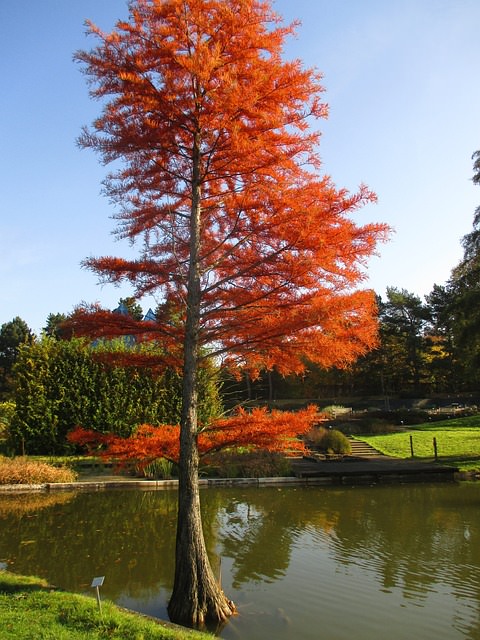13.53 氢-高级
章节大纲
-
A duckweed-like , which caused the current “Icehouse Earth”… an “upside-down parsnip” which can store up to 32,000 gallons of in its trunk… a fig aptly named “The Strangler”… “air plants” which form treetop pools used as nurseries by poison arrow tadpoles ... giant “monkey cups” secreting and holding nearly a gallon of , which digest small mammals and reptiles… tiny bladders which suction in prey in less than 2 thousandths of a second… How did these amazing plant structures and “behaviors” come to be?
::造成目前“冰室地球”的鸭子般的草原, 造成目前的“冰室地球”......一个“上下爬的洞穴”,可以储存多达32,000加仑的树干......一个无花果的称为“Strangler”......“Air 植物”形成树顶池,这些树顶池被毒箭用作苗圃......巨大的“猴子杯”隐蔽和持有近一加仑,它消化了小型哺乳动物和爬行动物......小膀胱,在不到二千分之二的秒内吸食猎物......这些惊人的植物结构和“行为”是如何来的呢?You have learned that favors organisms that are well suited for survival in a particular environment. Organisms are well suited because they have adaptations - heritable characteristics that help them to survive in their habitats . Adaptations arise as chance variations in characteristics, resulting from in or from new combinations of genes , shuffled by and . Often, such variations are unfavorable. The environment may change, making formerly adaptive variations unfavorable. Individuals with unfavorable variations may die before they can reproduce. However, individuals with favorable variations – adaptations, which better suit them to their environment – survive to reproduce, and their adaptations are passed on - to offspring and the future.
::生物体非常适合适应在特定环境中生存的有机体。 生物体非常合适,因为它们有适应性 — — 有助于其栖息地生存的遗传性特征。 适应性随着基因新组合或基因新组合的产生而出现的机会变化而出现。 这种变化往往不利。 环境可能会改变,使先前适应性变化变得不利。 具有不利变异的个人可能会在繁殖前死亡。 然而,具有有利变异性的个人 — — 更适合其环境的适应性 — — 生存以繁殖,其适应性会传给后代和未来。Although some “neutral” variations survive and persist by chance alone, millions of years of natural selection have refined most heritable characteristics of organisms today, suiting them to their habitats with great precision. In this lesson, you will explore four plant lifestyles and the adaptations that form “survival kits” for each. You will also discover the “evolutionary design” or survival value of the unique structures and behaviors introduced above - from Strangler Fig to Monkey Cup.
::尽管某些“中性”变异继续存在,而且只是偶然地继续存在,但数百万年的自然选择使今天的生物具有最可遗传的特性,非常精确地适应其生境。 在这个教训中,你将探索四种植物生活方式以及构成每个植物的“生存工具箱”的适应。你还将发现上述独特结构和行为——从Strangler Fig到猴子杯——的“进化设计”或生存价值。Hydrophytes: Returning to Water
::水文:返回水中plants (also known as hydrophytes) live in or on the water. Plants which live in completely saturated soils may also be considered hydrophytes. Hydrophytes may be:
::生活在水中或水面上的植物(又称氢植物),生活在完全饱和土壤中的植物也可被视为氢植物。-
Submerged
::冲积 -
Surface-floating, unanchored
::地表漂浮,未固定 -
Emergent
::新兴 -
Anchored or rooted plants, at edges or in saturated soils –
wetland
plants
::在边缘或饱饱和土壤中生长或植根植物 -- -- 湿地植物
Submerged plants live entirely underwater, and therefore show the greatest diversity of adaptations. There are two distinct advantages to an aquatic habitat:
::沉积的植物完全生活在水下,因此表现出了最多样化的适应。-
Water – that critical resource for life – is always available to all
tissues
. Aquatic plants do not need to spend
energy
on plumbing systems to transport water or protective mechanisms to regulate its loss.
::水 — — 生命的关键资源 — — 总是可供所有组织使用。 水生植物不需要将能源用在管道系统上来运输水或管理水损失的保护机制上。 -
Support in water is much greater than in air. Aquatic plants have no need for extensive and expensive woody skeletons or root systems.
::水生植物不需要广泛而昂贵的木质骨骼或根系统。
Because aquatic plants are descendents of plants, many adaptations involve energy-saving losses of water- and support-related adaptations to land. Submerged plants have very thin cuticles – or none at all; stomata may be absent, as well. Most submerged plants lack wood or xylem in and because support, anchorage, and water transport are not necessary; flexibility better withstands currents and waves. Some submerged plants, such as the Ceratophyllum demersum ( Figure ) – actually a flowering plant - lack roots entirely. Finely dissected, thread-like leaves maximize surface-to-volume ratios for and for direct absorption of nutrients and gases. Many submerged plants specialize in (asexual), in part because pollination is a service seldom available underwater. Fragmentation , for example, allows any piece of the plant to become a new individual. Fragments of Eurasian water milfoil ( Myriophyllum – “million leaves”) can be carried from one lake to another on boats; a single fragment can spread into dense mats of vegetation which crowd out other plant (and animal) , especially in nutrient-rich lakes. de-emphasizes the need for flowers . As for other losses ( cuticle , stomata, roots, xylem), loss of flowers represents an energy savings for some submerged plants.
::由于水生植物是植物的后代,许多适应措施都涉及节能水和与支持相关的适应适应土地的能源损失。 淹没的植物有非常薄的切片 — — 或根本没有;石塔也可能不存在。 大部分淹没的植物缺乏木材或氧化物,因为支持、锚定和水运输是不必要的;灵活性更能抵御海流和海浪。 某些淹没的植物,如植物(Figure) — — 实际上是开花植物 — — 完全缺乏根基。 精细的、线状的叶子可以最大限度地增加营养和气体直接吸收的地表层与体的比率。 许多淹没的植物(性化的)之所以专门化,部分原因是授粉是一种很少在水下提供的服务。 例如,分解使任何植物的碎片都能成为一个新的个体。 欧亚水底质(Myriophyllum — “百万叶 ” ) 的碎片可以从一个湖泊带到另一个湖泊上; 单一的碎片可以扩散成密的植被,使其他植物(和动物)的果树根部的树根部损失成为了。Most submerged plants such as Ceratophyllum demersum lack cuticle, stomata, and xylem, because they have no need of water transport or additional support. Aquatic plants can spend energy savings to solve some of the problems of living in water:
::水生植物可以节省能源,-
Sunlight diminishes with increasing water depth. Structures that help plants leaves to reach the water’s surface are adaptive.
::阳光随着水深的增加而缩小。 帮助植物离开以到达水面的结构具有适应性。 -
Oxygen and carbon dioxide dissolved in water or mud are less available than in air, where aquatic plant
ancestors
evolved. Compared to aerated
soil
, mud is very low in O
2
, limiting root
respiration
as well as
nitrogen fixation
by associated (aerobic)
. Anoxic bacteria in mud also produce toxins and release toxic metals. Therefore, structures that facilitate gas exchange are critical.
::在水中或泥土中溶解的氧化物和二氧化碳比空气少,空气是水生植物祖先进化的地方。与蒸发的土壤相比,O2中的泥土非常低,限制了根呼吸以及相关的(有氧)氮固化。泥土中的厌氧细菌也产生毒素并释放有毒金属。因此,便利气体交换的结构至关重要。
Surface-floating plants such as water lilies ( Figure ) have broad flat, tough leaves with clustered at the upper surface to maximize flotation and sunlight absorption. Abundant stomata can remain open without concern for water loss; the plant need not spend the energy to close (or open) guard cells . For floating plants, however, water may interfere with stomatal function, so water lilies and duckweed repel water with a thick waxy cuticle, preventing stomatal blockage. Many water lily flowers are bowl-shaped, so that they float easily on the surface, open to pollinators . Water lily stalks have air-filled spaces to aid flotation and transport gases from the surface to the roots. Aerenchyma is tissue filled with air cavities, which may aid flotation and increase gas exchange (especially O 2 ) between the shoot, which may be in the air, and an underwater - or flooded - root.
::地表漂浮的植物,如水百合(Figre),有宽阔的、坚硬的叶子,在上层表面聚集在一起,以尽量软化和吸收阳光。丰厚的石塔可以保持开放,而不必担心水的流失;植物不需要用能量来关闭(或开)警戒室。对浮动植物来说,水可能会干扰表面功能,因此水百合和鸭毛回流水会用厚厚的蜡性切片阻塞。许多水百合花都是碗状的,很容易在地表上漂浮,对授粉师开放。水里刺有填满空气的空间,可以帮助浮化和将气体从表面输送到根部。空气孔充满了组织,这可能有助于空气中的烟雾和水下(或洪水)根之间的气体交换(特别是O2),从而帮助在空气中进行浮化和增加气体交换(特别是O2)。Water lilies have broad, flat leaves which float at the surface of the water. Emergent plants , such as Watercress and Water Lettuce ( Figure ), support vegetation above the water surface, using air-filled stems, hairy surfaces that trap air, air spaces within tissues, and osmotic pressure within tissues. Watercress has hollow stems, which float at the surface of streams and support layers of emergent leaves and flowers. Water Lettuce traps air in microscopic baskets made of tiny hairs, which cover the leaves and parts of the flowers. Because it is free-floating, its long, thin feathery roots serve primarily to absorb nutrients and oxygen. Stolons allow water lettuce to reproduce asexually, forming dense mats which can choke out other vegetation. Skeletons of veins support some emergent plants, and some species have two types of leaves – one (finely divided, with little vascular tissue) for submersed leaves, and another (broader blades with stiff veins) for above-water leaves. One advantage of rising above the surface is similar to the advantage of height in trees: more sunlight. Pollination services (wind and insects) are another important advantage of life above the surface, so some species limit emergent organs to just flowers.
::水晶和水生生生植物(Figure)等新兴植物支持水面上的植被,利用空气填充的根茎、毛状表面来捕捉空气、组织内的空气空间以及组织内的表面压力。水晶有空洞的根茎,浮在溪流的表面,支撑着一小层浮露的树叶和花朵。水生生植物在由小毛毛组成的微型篮子中捕捉空气,覆盖花叶和部分花卉。由于它是自由漂浮的,长而薄薄的根根毛主要吸收营养素和氧。斯托伦允许水生泡以性感方式繁殖,形成稠密的垫子,可以扼杀其他植被。血管的滑石支撑着一些突发植物,有些物种有两种叶叶子类型 — 一种(微分分,与微血管组织不相干),另一种(有僵硬血管的叶叶片)用于上叶叶。表面的一个优势与树顶的优势相似,一种是高处的植物的优势:更亮的粉质是其他的植物。-
Edit here for caption
::编辑此标题 -
Edit here for caption
::编辑此标题
Floating emergent aquatic plants, such as Watercress (left) and Water Lettuce (right) have finely divided roots to absorb nutrients; they need not anchor or support the plants. Watercress has hollow, air-filled stems, which support mounds of leaves and flowers above the surface of streams. Tiny hairs cover the leaves and flowers of Water Lettuce, forming minute baskets - highly magnified at lower right. Air bubbles trapped in the baskets help to float the plant. Plants rooted in saturated soils ( Figure ) often reproduce by rhizomes, forming thick mats which trap sediment, limit soil erosion and gradually convert watery habitats to stable land. The biggest problems for rooted aquatic plants are oxygenation of roots and support in mucky, unstable soils. In herbaceous plants specializing in the muddy borders of lakes and rivers, O 2 diffusing through the aerenchyma may oxygenate a region of soil surrounding the plant, restoring nitrogen fixation and reducing toxins. Leaves are often tall and narrow, limiting resistance to wind and waves. Trees tolerant to flooding and very wet soils may produce accessory roots for support and increased access to oxygen. For example, Black Mangrove roots send up aerial projections called pneumatophores , made of spongy tissue specialized for absorbing oxygen from the air when exposed. Red Mangroves and Bald Cypress send out stilt roots, which absorb oxygen even when high tides or floods submerge lower roots. The stilts also lend support.
::植根于饱和土壤中的植物(Figure)往往由恒河繁殖,形成厚厚的垫子,捕捉沉积物,限制土壤侵蚀,并逐渐将水生境转化为稳定的土地; 植根水生植物的最大问题是根部的氧和对土壤不稳定的土壤的支持; 在专门从事湖泊和河流泥土边缘的草原植物中,二氧化在空气中漂浮,可能使植物周围的土壤发生氧气,恢复固氮和减少毒素; 叶子往往高而狭窄,限制了对风和波的抵抗力; 耐洪和湿润的土壤可能会产生附根以支撑和增加获得氧气的渠道; 例如, 黑红树林根根和鲍德基压在暴露时会发出专门吸收空气氧的海绵组织构成的空中预测, 红树林和鲍尔德基压会发出蒸气根, 即使在高潮或洪水稀释下根也会吸收氧。-
Edit here for caption
::编辑此标题 -
Edit here for caption
::编辑此标题
Wetland plants must be adapted to low oxygen levels and lack of support in mucky soils. Herbaceous plants, such as cattails (left), have tall, thin leaves which limit resistance to wind and waves, and thick rhizomes which form dense, supportive mats. Trees such as Bald Cypress (right) send out buttressing or stilt roots for support and for oxygen intake. Importance of Aquatic Plants
::水生植物的重要性We have noted that wetland plants trap sediments and limit erosion; they also stabilize shorelines and provide nurseries for fry, tadpoles, and aquatic insect larvae .
::我们注意到,湿地植物捕捉沉积并限制侵蚀;它们还稳定海岸线,为油炸、和水生幼虫提供苗圃。Wetland plants remove nitrogen, phosphorus, and some toxic pollutants from eutrophic lakes and waterways. We exploit this characteristic of certain plants, such as duckweed, to treat sewage by biological filtration or to restore polluted habitats by bioremediation . Plants which are too efficient at this nutrient-removal task become invasive and crowd out native species; in addition to water milfoil and water lettuce, mentioned above, Water Hyacinth is an infamous example.
::湿地植物除去富营养性湖泊和水道中的氮、磷和某些有毒污染物,我们利用鸭草等某些植物的这一特征,通过生物过滤处理污水,或通过生物补救恢复被污染的生境,在清除营养物任务方面效率太高的植物成为侵入性和排挤本地物种的植物;除了上述水的土和生化物之外,水的Hyacinth是一个臭名昭著的例子。The duckweed-like aquatic fern Azolla , dubbed “mosquito fern” because of the mistaken belief that a mosquito cannot penetrate its thick mats to lay eggs , is considered a “super plant” because symbiotic bluegreen fix (and share!) nitrogen, allowing Azolla to double its mass in as little as 2-3 days. Used for a thousand years in rice paddies, Azolla grows quickly, suppresses weeds , and fertilizes the rice with nitrogen as it dies. Recently, Azolla has been considered as a source of sustainable food for livestock. However, the most dramatic feat attributed to this tiny fern is no less than a turn-around of world climate . Some climatologists have interpreted fossilized layers of Azolla in sediments as an 800,000-year bloom, which could have caused the simultaneous, dramatic decline in Earth’s temperature. According to their calculations, the amount of carbon “sequestered” in Azolla could explain the documented decline in atmospheric CO 2 – and the corresponding change from “Greenhouse Earth” to “Icehouse Earth” 49 million years ago.
::阿佐拉(Azolla)被称作“摩斯奎托产地”的鸭子般水生动物阿佐拉(duckweed),因为错误地认为蚊子不能穿透其厚厚的垫子以产卵,因此被认为是“超级植物 ” , 因为共生蓝绿(和共享 ) 氮,让阿佐拉在不到2—3天的时间里将质量翻番。 阿佐拉在稻田里生长了千年,抑制了大麻,并在水稻死后将水稻用氮进行肥化。 最近,阿佐拉被视为牲畜可持续食物的来源。 然而,这一微小粪便造成的最戏剧性剧情不亚于世界气候的转变。 一些气候学家将沉积物中阿佐拉的化层解释为80万年的开花朵,这可能导致地球温度同时急剧下降。 根据他们的计算,阿佐拉的碳“被溶化 ” 数量可以解释为什么记录到大气CO2的下降 — — 以及从“绿地”到49万年前的“Icehouse 地球 ” 。Summary
::摘要-
An adaptation is a heritable characteristic which helps an organism survive in a particular habitat.
::适应是一种可遗传的特征,有助于生物体在特定生境中生存。 -
Chance variations and natural selection produce the variety of adaptations we observe in plants.
::可能的变异和自然选择 产生各种各样的适应 我们观察在工厂中。 -
Aquatic plants may be submerged, surface-floating, emergent, and/or anchored in saturated soil.
::水生植物可能被淹没、地表漂浮、出现和/或被固定在饱和土壤中。 -
Aquatic habitats provide water and support, but sunlight and oxygen decline below the surface.
::水生生境提供水和支持,但阳光和氧气却在地表下下降。 -
Many submerged plants absorb gases and nutrients from the water with finely divided leaves.
::许多被淹没的植物吸收水中的气体和养分,精细分割的叶子。 -
Surface-floating plants have broad flat leaves and bowl-shaped flowers.
::地表漂浮的植物有宽阔的平叶和碗状花朵。 -
Emergent plants support structures above the water – especially flowers, for pollination.
::在水之上的新兴植物支持结构 — — 特别是花朵,用于授粉。 -
Wetland plants, anchored in saturated soil, have adaptations to promote oxygenation of roots.
::植根于饱和土壤的湿地植物有适应性,以促进根部的氧化。 -
Aquatic plants stabilize shorelines, purify water and soil, fertilize, control weeds, and feed livestock.
::水生植物稳定海岸线、净化水和土壤、施肥、控制杂草和饲养牲畜。
-
Submerged






